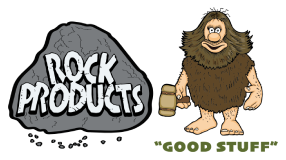
Achieving the Natural Look with Stone Dry Beds
Property owners with sloping land or land with low spots may encounter pooling when excess water flows through the area. One effective and natural solution is creating a dry creek bed. Here, Rock Products, Inc. explores this drainage solution further and details how you can achieve a dry creek bed with stepping stones on your property.
What Is a Dry Creek Bed?
A creek bed, also sometimes referred to as an arroyo, is a shallow-dug trench lined with landscape fabric and filled with boulders and stones of various sizes and styles. When wet weather hits, the excess surface water that would normally pool up is instead channeled down the creek bed to a suitable exit or collection point. This prevents water from stockpiling in undesired areas and therefore helps you avoid potentially costly water damage to your home or a neighbor’s property.
While its main purpose is to be an effective drainage solution, a dry creek bed can also be used as an attractive landscape feature that requires very little maintenance. What makes this drainage solution favorable to homeowners is the ability to have full control of the finished product. You will get to decide how it looks, design the path of the creek, and choose the placement for all the boulders and stones. Additionally, you can add other landscape elements along the edges of the creek bed for a more natural, one-of-a-kind look.
What to Consider When Building a Dry Stone Garden Bed
Before beginning any project, it’s wise to familiarize yourself with your town or county’s codes and regulations. In most cases, a dry creek bed doesn’t demand a permit. However, it’s still very important that homeowners give some thought to the drainage path to ensure water is directed toward an appropriate location. Keep in mind, in most areas it’s illegal to send drainage water into the street because it can place added stress on storm sewer systems and wash lawn treatments and other contaminants into local waterways.
An ideal dry stone garden bed directs excess water to a natural settling area where the water can be absorbed into the soil. Homeowners who don’t have this option should consider reaching out to their local city office for resolutions. They may ask you to submit plans for your project, which you will submit for approval from the appropriate city authority.
You should also keep in mind neighboring properties. If water is directed toward these residences, you could receive complaints from your neighbors and may end up being held liable for any repairs they must make.
Tips for Achieving a Natural Look
The purpose of a dry creek bed is to create a natural drainage solution. To achieve this look, clients should think about the overall design of the landscape feature. Curves along the path help give it that more natural appearance as opposed to straight lines.
Rock placement also can play a role in how natural a dry creek bed appears. Random placement of stones presents a rawer look rather than a pattern throughout. Keep in mind, in a real river, larger rocks are usually found along the outsides of river bends.
Materials for Dry Stone Garden Bed at Rock Products, Inc.
Landscapers, contractors, and DIY homeowners looking for a natural way to resolve their property’s drainage issues should consider creating a dry creek bed with stepping stones. Clients can acquire the necessary materials and building supplies to complete their projects at Rock Products, Inc. Located in West Deptford, New Jersey, our mission has always been to provide residents throughout the state with quality products and services. It has been our privilege to do so since 1995.
To better accommodate our clients, we are happy to offer freight services. Clients can elect to have their building materials conveniently delivered right to their location. This eliminates the hassle of transporting heavy materials yourself, which can be time-consuming and potentially dangerous without the proper equipment. To learn more about dry stone garden beds and how you can build one yourself, contact us today at Rock Products, Inc.

